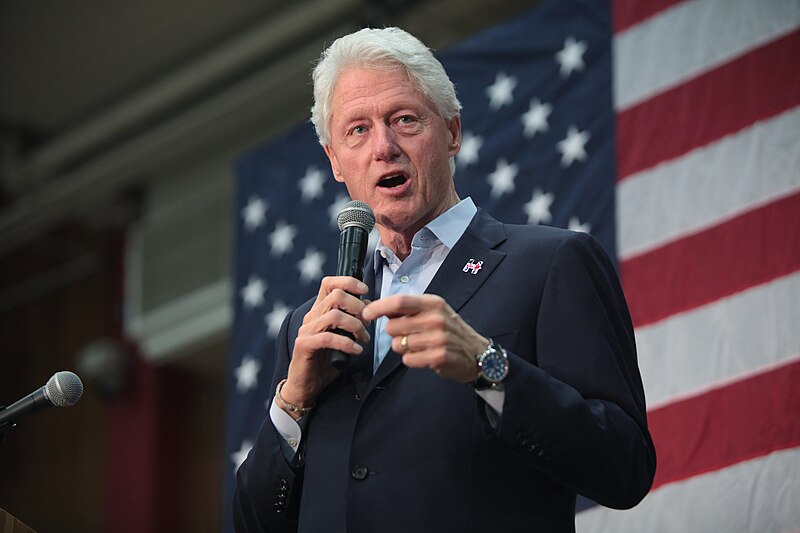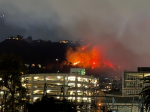
A new documentary has reignited global interest in one of Russia’s most devastating military tragedies—the sinking of the Kursk submarine—and the Kremlin’s response that followed.
On August 12, 2000, just three months into Vladimir Putin’s presidency, the Russian nuclear submarine K-141 Kursk suffered a catastrophic explosion during a naval exercise in the Barents Sea. The disaster claimed the lives of all 118 sailors on board, while the world watched in horror as Moscow hesitated to accept international assistance.
Now, a two-part documentary titled Kursk: 10 Days That Shaped Putin, produced by Hillary and Chelsea Clinton’s company HiddenLight, sheds new light on the events, revealing shocking claims from former U.S. President Bill Clinton. According to Clinton, Putin deliberately allowed his sailors to die rather than risk exposing Russian nuclear technology to foreign rescuers.
A Tragedy Unfolds
At 11:28 AM on the day of the explosion, American submarines patrolling the region detected the blast and immediately suspected a major incident. The U.S. quickly offered assistance, but the Kremlin remained silent, determined to maintain an illusion of control and military strength.
Despite mounting evidence of the disaster, Putin delayed accepting international aid for three days—by which time it was already too late for any potential survivors. Even after reluctantly allowing Norwegian divers to assist, Russian officials obstructed the operation, providing only crude, hand-drawn maps of the escape hatch and preventing British specialists from using critical rescue equipment.
When divers finally reached the wreckage on August 20, all the sailors were dead.
Clinton’s Shocking Revelation
For the first time, Bill Clinton has spoken publicly about his role during the crisis. In the documentary, he reveals that he personally called Putin, urging him to accept help to save his trapped sailors. However, Clinton claims Putin prioritized secrecy over human lives.
"Putin knew that if we went down there, there were things we would learn that couldn’t be unlearned," Clinton said, alleging that the Russian leader sacrificed his own men to prevent foreign powers from gaining insights into Russian nuclear technology.
Clinton, who initially hoped Putin would foster stronger U.S.-Russia relations, said the Kursk disaster revealed the Kremlin’s true priorities. "He was clearly determined to restore Russia's greatness. I worried that meant we'd see a new form of toughness."
A Political Turning Point
Beyond being a naval disaster, the Kursk tragedy marked a pivotal moment in Russian politics. The Kremlin’s mismanagement of the crisis triggered national outrage, with grieving families demanding answers. But instead of admitting fault, Putin’s administration shifted blame and tightened its grip on information.
One of the most striking moments in the aftermath came when Nadezhda Tylik, the mother of a deceased submariner, confronted officials at a press conference. As she passionately demanded the truth, cameras captured what appeared to be a plain-clothes operative injecting her with a sedative before carrying her away—a chilling demonstration of state control.
Putin responded to the backlash not by increasing transparency, but by consolidating power. He blamed Russia’s struggling military on oligarchs, used the crisis to justify suppressing the free press, and intensified state control over media narratives.
A Glimpse of the Future
Reflecting on the event, Clinton believes the Kursk disaster shaped Putin into the authoritarian leader he would later become. "I think he was traumatised by the bad press he got," Clinton said. "That intensified his determination to seize more control over the media."
Looking back, he sees the tragedy as a warning of what was to come. "I thought he had enormous potential to lead Russia into a more open, interconnected world. And he didn’t."
Instead, the man who once promised reform solidified his hold on power, silenced dissent, and set the course for the authoritarian rule the world knows today.
The Kursk disaster was more than a naval catastrophe—it was a defining moment that exposed Putin’s priorities and foreshadowed the path Russia would take under his leadership. Photo by Gage Skidmore, Wikimedia commons.






































